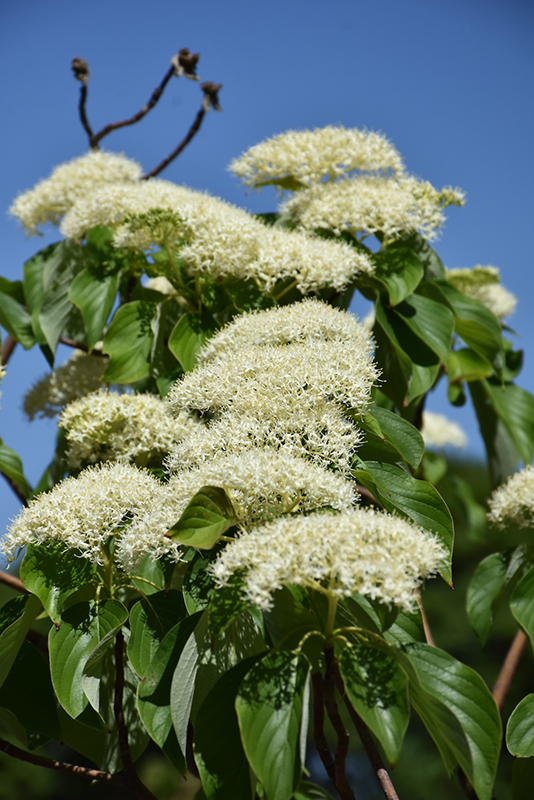>> Home
June Snow Giant Dogwood
Cornus controversa 'June Snow-JFS'
Height: 30 feet
Spread: 40 feet
Sunlight:
![]()
![]()
Hardiness Zone: 4
Description:
Covered with lovely white flower clusters in spring; a large rounded form, with gracefully layered branches make this tree an excellent specimen; attractive fruit in late summer turns deep blue-black; orange to red fall color
Ornamental Features
June Snow Giant Dogwood features showy clusters of white flowers held atop the branches in late spring. It has dark green deciduous foliage. The pointy leaves turn an outstanding dark red in the fall. It produces navy blue berries from early to late fall. The warty gray bark and green branches add an interesting dimension to the landscape.
Landscape Attributes
June Snow Giant Dogwood is a deciduous tree with a stunning habit of growth which features almost oriental horizontally-tiered branches. Its average texture blends into the landscape, but can be balanced by one or two finer or coarser trees or shrubs for an effective composition.
This is a relatively low maintenance tree, and should only be pruned after flowering to avoid removing any of the current season's flowers. It is a good choice for attracting birds to your yard. It has no significant negative characteristics.
June Snow Giant Dogwood is recommended for the following landscape applications;
- Accent
- Shade
Planting & Growing
June Snow Giant Dogwood will grow to be about 30 feet tall at maturity, with a spread of 40 feet. It has a low canopy with a typical clearance of 4 feet from the ground, and should not be planted underneath power lines. It grows at a slow rate, and under ideal conditions can be expected to live for 60 years or more.
This tree does best in full sun to partial shade. It requires an evenly moist well-drained soil for optimal growth, but will die in standing water. It may require supplemental watering during periods of drought or extended heat. It is very fussy about its soil conditions and must have rich, acidic soils to ensure success, and is subject to chlorosis (yellowing) of the foliage in alkaline soils. It is quite intolerant of urban pollution, therefore inner city or urban streetside plantings are best avoided, and will benefit from being planted in a relatively sheltered location. Consider applying a thick mulch around the root zone in winter to protect it in exposed locations or colder microclimates. This is a selected variety of a species not originally from North America.

